Ben Youngs is helping to transfer the attacking style Eddie Jones has introduced with England to the Leicester Tigers game plan
Last season Leicester Tigers possessed one of the worst attacking games in the Aviva Premiership, generating only 37 tries from their 22 regular season games. Their try tally was second only to London Welsh, who finished rock-bottom of the table and were relegated.
This season has shown a definite improvement, with the Tigers having registered 47 tries with two league games still to be played – only four other sides have scored more tries than Leicester this term.
Aside from changes in playing personnel, there are two main reasons for the improvement:
- The introduction of Aaron Mauger and his Canterbury-style offence.
- The flow of intellectual property from the national side down to the club scene.
The influence of Mauger and the Canterbury system is an article for another day. What was most clearly discernible in the recent European Champions Cup match against Stade Francais was the influence Eddie Jones is having on the attacking games of some of the leading lights in English club rugby.
Information tends to flow from the top downwards and strong England performances have an impact on the professional level underneath them. In 2012 for example, the landmark win over the All Blacks in December produced a strong ripple effect on club attitudes to the breakdown for the rest of the season.
So how has Jones’s influence filtered down to the Tigers? It is the presence in both teams of half-back Ben Youngs that has proven crucial, and I believe Youngs has been the main conduit of information from national to club level. In particular it has been Youngs’s understanding of Jones’s principle of quick-hitting short-side attack that has been most in evidence.
So let’s take a look at some examples. The essence of Jones’s attack was distilled in England’s final try of the Six Nations against France.
The springboard for the score is a midfield scrum with England No 8 Billy Vunipola picking the ball out of channel one.
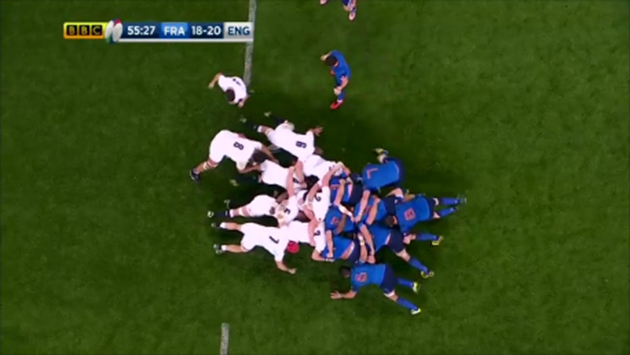
The quick pick-up allows Vunipola a head start out to the right with the left-sided France flanker Damien Chouly still pinned to the edge of the scrum.
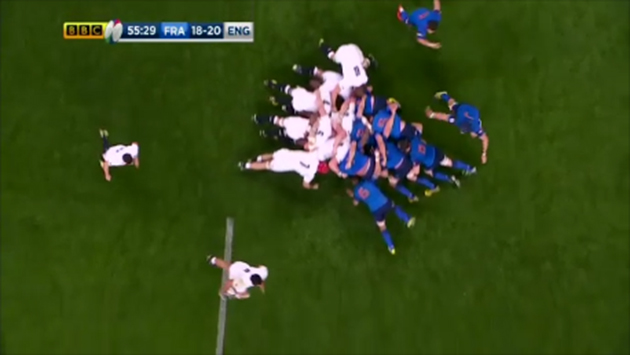
By 55:31 Vunipola has run over the top of France fly-half Jules Plisson and is 15 metres across the advantage line.

The critical moment in the sequence arrives at 55:33. Because of the nature of their domestic competitions, European teams in general (and French sides in particular) tend to wrap two or three players automatically to the far side of breakdowns on defence. They are used to playing against same-way attacks featuring massive collisions at first receiver between forwards, where this movement is necessary. It is in their muscle memory, so to speak.
So what is the action of the first two French defenders – Maxime Machenaud on his feet above Vunipola and Chouly tracking back on the left edge of the screen – at 55:31? They shift across to the open-side of the ruck by 55:33, and even the third defender to arrive (Yoann Maestri) is in the action of wrapping around too, with his shoulders square to the far sideline.
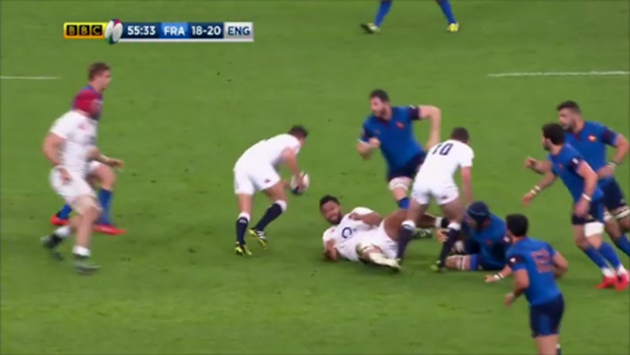
Youngs’s first instinct (or instruction) is to come back ‘against the grain’ of that movement to the short side. When the camera shot opens out at 55:35 England have a 4-1 numbers advantage in that area. Youngs puts through a well-weighted short kick, with Anthony Watson having the time to stop and collect the ball before scoring in the left corner.

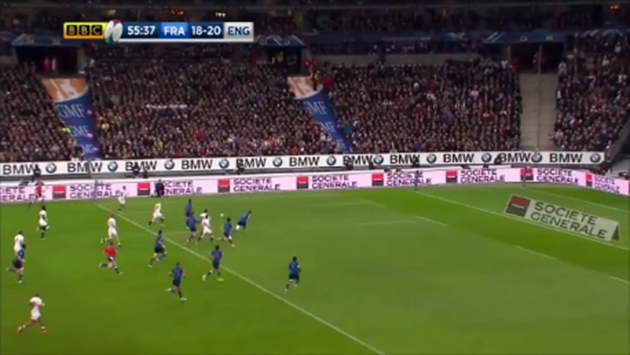
Youngs’s movement is no accident. In the Stade Francais game, Leicester scored a try from kick return in which his action was identical.
Here Tigers full-back Mathew Tait makes the initial cut at 44:42, and after he is tackled the same automatic reaction of the first two Stade defenders is in evidence.
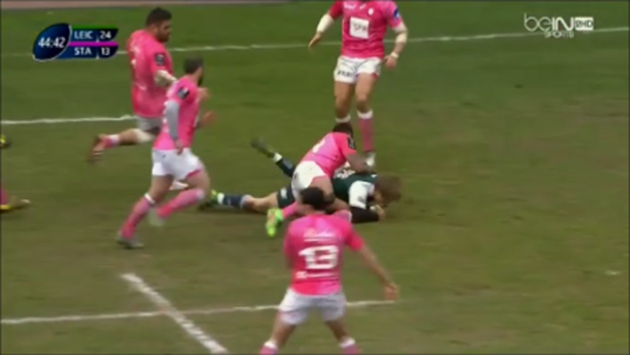
They immediately wrap to the far side of the tackle area at 44:43 and 44:44, allowing Youngs to scoot back to the short side against an isolated defender (Sergio Parisse) at 44:45.
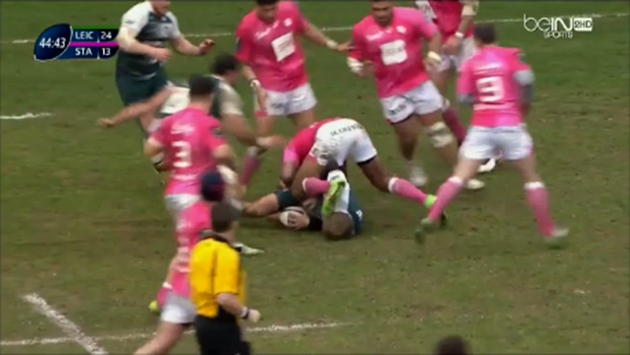
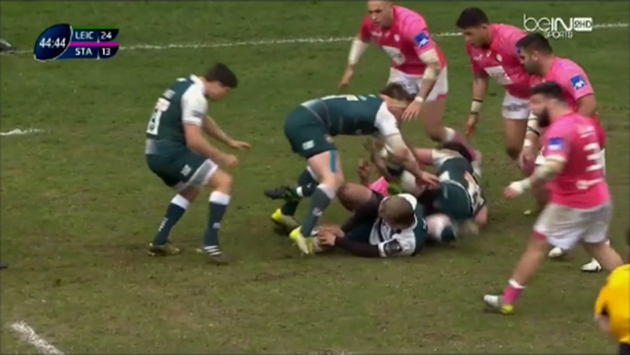
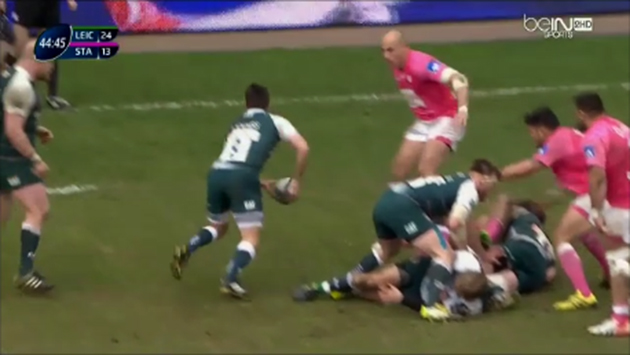
One pass is enough to put Vereniki Goneva away down the left touchline for the try at 44:47.

The movements of the key players are even more obvious in the replay from behind the posts. In the first shot there are three defenders to the right of the tackle, two seconds later there is only one.
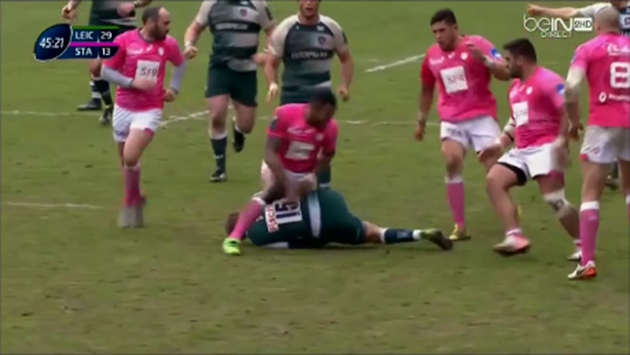
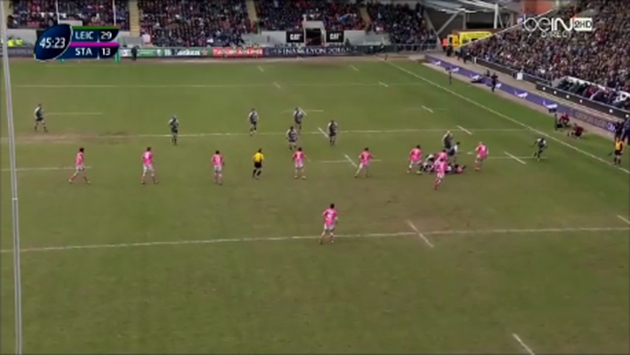
The same basic principle was at work in an earlier Tigers first-half try and again the attacking intelligence is all flowing through Youngs.
At 30:30 he is signalling for a backs receiver (Peter Betham) to shift around from the open-side to the short side of the field. Youngs can see two Stade props defending on that side, with only the right wing (Waisea Nayacalevu) beyond them. If the wing can be committed, there will be no meaningful cover sliding in behind him.
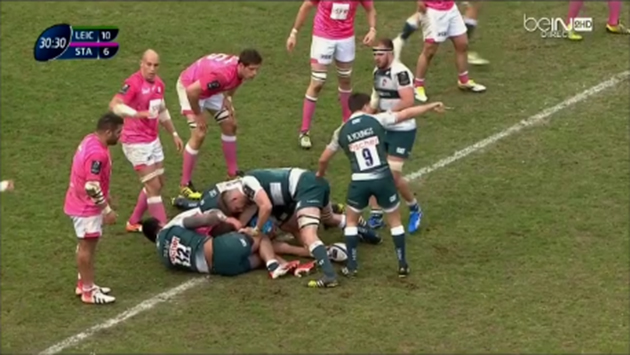
Betham dutifully swings around on to the 15m line at 30:32, and a terrific first couple of steps take him straight onto Nayacalevu at 30:34.
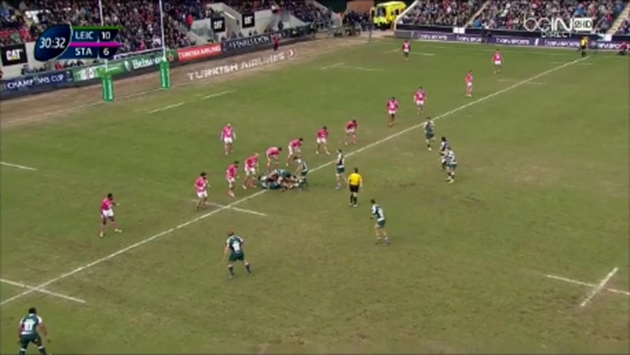
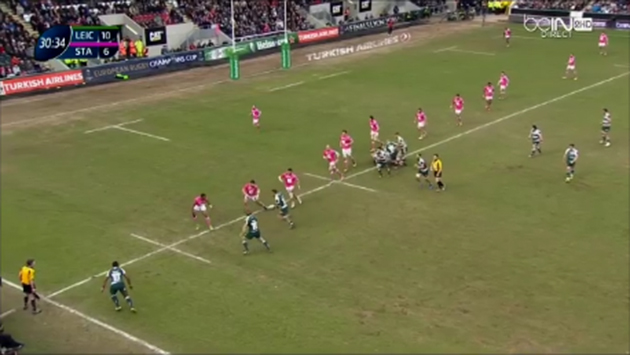
When the pass is made to Goneva at 30:35, there is no way the two props can get across to defend him.
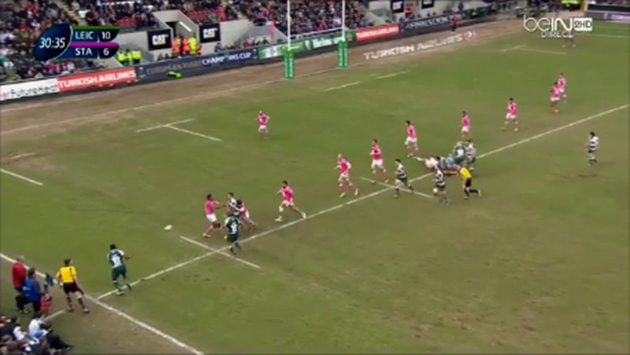
The fact is that improvements in the game at national level can have a concrete impact at club level also, providing key personnel are available as the conduits of change – in this case the presence of Youngs. Intellectual property ‘off the top’ is dispersed and as a result the game in England as a whole is driven forward.
For the latest Rugby World subscription offers, click here.






